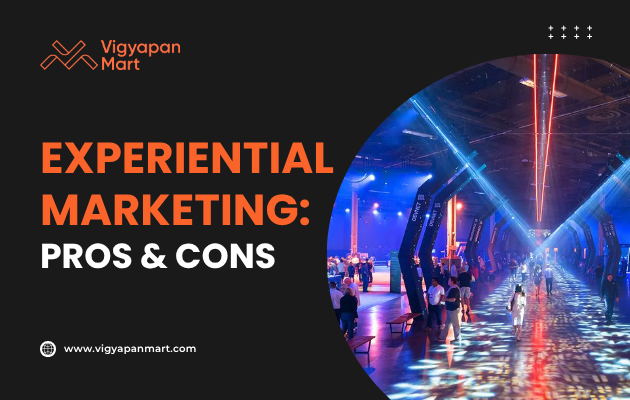Experiential Marketing Pros and Cons

Experiential marketing has emerged as a powerful strategy for brands looking to engage consumers on a deeper level. This helps brands create immersive experiences that let companies build emotional connections with consumers. Notably, traditional advertising often fails to achieve such genuine connections. However, like any marketing strategy, experiential marketing has its pros and cons. And everyone should know them before launching an experiential marketing campaign.
What is Experiential Marketing?
Experiential marketing has several other names as well. Some of the most common of them are:
- Engagement marketing,
- Event marketing,
- XM marketing
It focuses on creating memorable interactions between a brand and its consumers. Unlike traditional marketing methods, it uses active interaction between consumers and brands. In contrast, traditional marketing relies heavily on the passive consumption of advertisements. Experiential marketing showcases the brand's values and products. These experiences range from live events and pop-up installations to interactive digital campaigns.
For example-
Coca-Cola has successfully utilized experiential marketing through its "Share a Coke" campaign, where consumers could find bottles with their names on them. This not only encouraged purchases but also created a personal connection between the consumer and the brand.
Pros of Experiential Marketing
1. Enhanced Brand Loyalty
Experiential marketing builds a sense of community and belonging among consumers. When individuals participate in an engaging experience, they are likely to develop a positive association with the brand. According to research, 70% of consumers who have a positive experience with a brand are likely to become repeat customers.
2. Direct Consumer Engagement
This approach allows brands to interact directly with their target audience, gathering real-time feedback and insights.
For example-
Nike often hosts events where consumers can try out their products in real-world settings. This provides them with valuable data about customer preferences and behaviors and creates a positive brand image.
3. Increased Brand Awareness
Experiential marketing can create buzz and excitement around a brand. People share their unique experiences on social media platforms that amplify their reach beyond the initial audience.
For example-
Red Bull's extreme sports events, not only promote their energy drink but also position the brand as an adventurous lifestyle choice.
4. Memorable Experiences
Experiential marketing creates lasting memories for consumers. A memorable experience is more likely to be recalled than a traditional advertisement, making it an effective way to leave a lasting impression.
For example-
IKEA's sleepover in-store event allowed participants to experience the brand's products in a fun and engaging way.
Cons of Experiential Marketing
1. High Costs
One of the major drawbacks of experiential marketing is the cost involved in planning and executing these campaigns. From venue rentals to staffing and materials, expenses can quickly add up. Small businesses may find it challenging to allocate sufficient budgets for such initiatives.
2. Logistical Challenges
Executing an experiential marketing campaign requires careful planning and coordination. Factors such as location, timing, and weather can significantly impact the success of an event.
For example- if a brand plans an outdoor event but faces unexpected rain, it could lead to poor turnout and wasted resources.
3. Limited Reach
While experiential marketing can create strong connections with those who attend events, it may not reach broader audiences effectively. Brands must consider how to extend the impact of their experiences beyond the immediate participants through social media or follow-up campaigns.
4. Risk of Negative Experiences
If not executed well, experiential marketing campaigns can backfire and lead to negative consumer experiences.
For example- if attendees feel neglected or the experience does not meet expectations set by the brand's messaging, it could damage the brand's reputation rather than enhance it.
Conclusion
Experiential marketing presents both exciting opportunities and significant challenges for brands. The overall goal is to connect with their audience on a deeper level. While it can enhance brand loyalty and create memorable experiences, companies must carefully consider costs, logistics, and potential risks involved in such campaigns. Brands like Coca-Cola and Nike have demonstrated the power of experiential marketing when executed effectively. However, please note that they were fully aware of the pros and cons of their experiential advertising campaigns. We have listed some of the major pros and cons of experiential marketing campaigns. By understanding them deeply, businesses can craft the right strategies to cater to their audiences with minimum risk factors.
But before everything, remember that experiential marketing is not just about creating events; it’s about creating meaningful connections with the audiences that last long even after the event.
Are you looking for an experiential marketing agency? Connect with Vigyapan Mart today!









